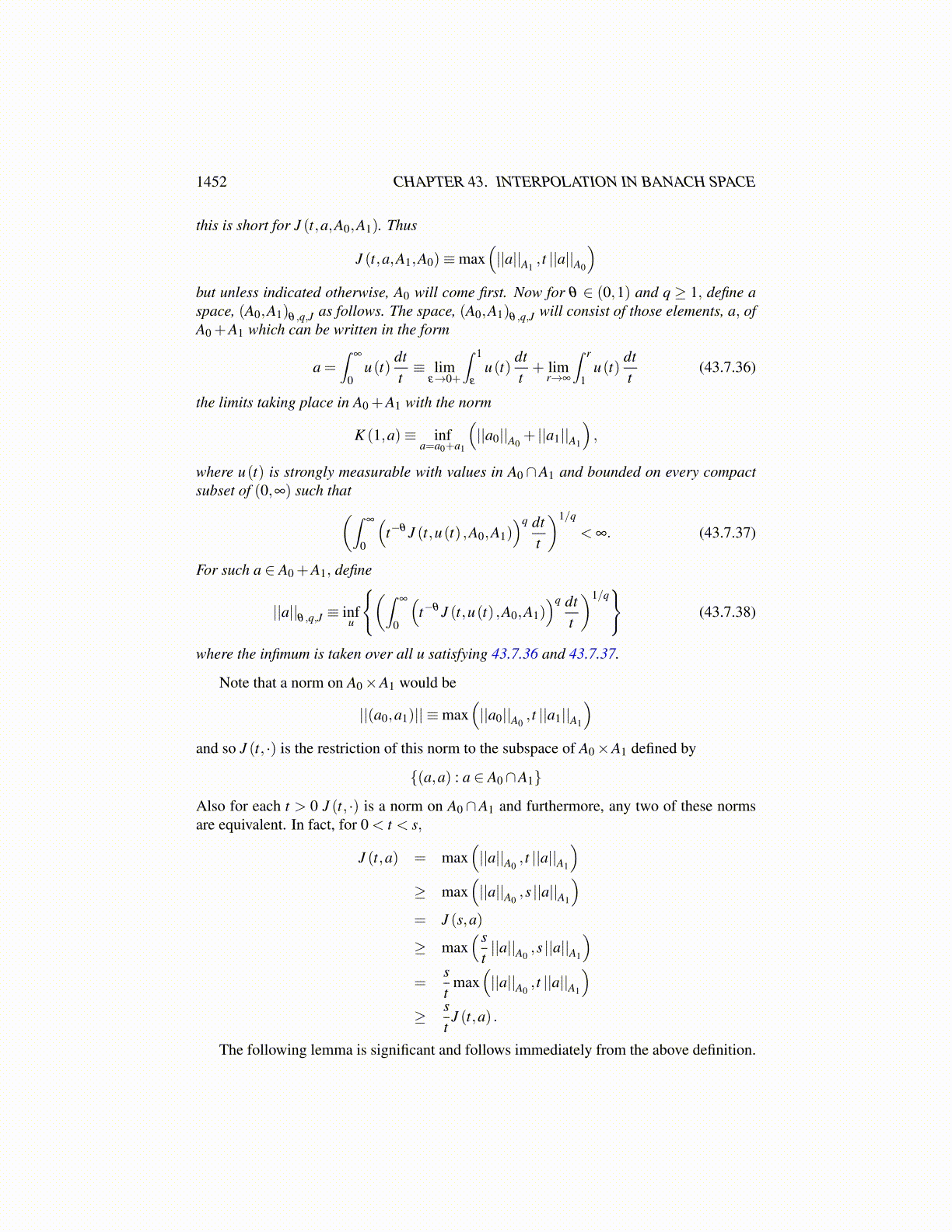
1452 CHAPTER 43. INTERPOLATION IN BANACH SPACE
such that an→ a in A0 +A1 because A0 +A1 is a Banach space. Thus, K (t,an)→ K (t,a)for all t > 0. (Recall all these norms K (t, ·) are equivalent.) Therefore, by Fatou’s lemma,(∫
∞
0
(t−θ K (t,a)
)q dtt
)1/q
≤ lim infn→∞
(∫∞
0
(t−θ K (t,an)
)q dtt
)1/q
≤ max{||an||θ ,q : n ∈ N
}< ∞
and so a ∈ (A0,A1)θ ,q. Now
||a−an||θ ,q ≤ lim infm→∞
(∫∞
0
(t−θ K (t,an−am)
)q dtt
)1/q
= lim infm→∞||an−am||θ ,q < ε
whenever n is large enough. Thus (A0,A1)θ ,q is complete as claimed.Next suppose A0 ⊆ A1 and the inclusion map is compact. In this case, A0∩A1 = A0 and
so it has been shown above that A0 ⊆ (A0,A1)θ ,q. It remains to show that every boundedsubset, S, contained in A0 has an η net in (A0,A1)θ ,q. Recall the inequality, 43.6.28
||a||θ ,q ≤
(1
qθ (1−θ)
)1/q
||a||θ1 ||a||1−θ
0
=Cε||a||θ1 ε ||a||1−θ
0 .
Now this implies
||a||θ ,q ≤
(Cε
)1/θ
θ ||a||1 + ε1/(1−θ) (1−θ) ||a||0
By compactness of the embedding of A0 into A1, it follows there exists an ε(1+θ)/θ netfor S in A1,
{a1, · · · ,ap
}. Then for a ∈ S, there exists k such that ||a−ak||1 < ε(1+θ)/θ . It
follows
||a−ak||θ ,q ≤(
Cε
)1/θ
θ ||a−ak||1 + ε1/(1−θ) (1−θ) ||a−ak||0
≤(
Cε
)1/θ
θε(1+θ)/θ + ε
1/(1−θ) (1−θ)2M
= C1/θθε + ε
1/(1−θ) (1−θ)2M
where M is large enough that ||a||0 ≤M for all a ∈ S. Since ε is arbitrary, this shows theexistence of a η net and proves the compactness of the embedding into (A0,A1)θ ,q .
It remains to verify the assertions 43.6.29-43.6.31. Let T ∈L (A0,B0) ,T ∈L (A1,B1)with T a linear map from A0 +A1 to B0 +B1. Let a ∈ (A0,A1)θ ,q ⊆ A0 +A1 and consider